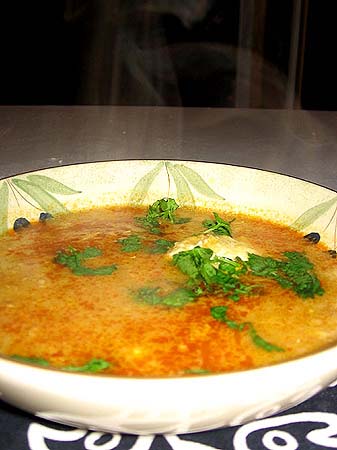
There is an ongoing dispute in our house over oatmeal.
Specifically, my wife disagrees with my method of cooking rolled oats.
"It looks like snot," she says.
"It's not snot," I reply. "It's porridge."
"It looks like snot and it's disgusting," is her retort. "I'm not eating anything that looks like snot."
My wife, you may have gathered, is sensitive to certain textures in food. She also does not like squash. Too much like, well, squash. Her disapproval of my oatmeal has affected our 7-year-old daughter as well. Now when I call her downstairs for breakfast, her first words are, "It better not be oatmeal."
The difference in cooking methods is extremely subtle. Only one little step separates my method from my wife's method. And that is, I place the oats in the water before bringing it to a boil. I know enough to remove the pot from the heat once the mix begins to bubble. My wife, meanwhile, first boils the water, then adds the rolled oats and removes the pot from the heat.
"If you'll notice," she likes to point out, "my oats are still flaky."
In other words, not like snot.
The other day I made a pot of oatmeal, but rather than just throw it in the garbage, my wife had a brilliant idea. Why not turn it into bread? For some reason, she was in a bread making mood. She located one of our favorite bread baking books--
Beard on Bread, by James Beard--and set to work.
What came out of the oven later that day were two of the most perfect loaves of oatmeal bread. Soft, lightly textured and sweet smelling--I can't remember when I've had a more delicious bread. Better than anything you can buy in the store. We immediately cut a couple of slices and smeared them with butter, a rare treat for us in these days of heart-healthy cooking.

So if you have a pot of oatmeal that looks like snot, or if you just happen to have some leftover oatmeal doing nothing better in the fridge, or if you're just in the mood to make a great loaf of bread, I can recommend this bread to you. Here is the recipe as published by James Beard in 1973.
1 cup coarse rolled oats
1 cup boiling water
2 packages active dry yeast
1
teaspoon granulated sugar
1/2 cup warm water (100 to 115 degrees approximately)
1 cup warm milk
1 tablespoon salt
1/4 dark brown sugar
4-5 cups all-purpose flour, approximately.
Cook the oats in the boiling water until thickened, about 3 minutes. Pour into a large mixing bowl and allow to cool to lukewarm. Meanwhile,
stir the yeast and teaspoon of sugar into the warm water until dissolved, and allow to proof. Add the warm milk, salt, brown sugar, and yeast mixture to the oats and
stir well, then stir in 4 cups of flour, 1 cup at a time.
Turn out on a floured board. Knead into a smooth pliable, elastic dough, if necessary using as much as 1/2 to 1 cup, or more, of additional flour to get it to the right feel. (This will take about 10 minutes, unless you do it in an electric mixer with a dough hook, which is what my wife did). Shape the dough into a ball, put into a well-buttered bowl, and turn to coat on all sides. Cover and let rise in a warm, draft-free place until doubled in bulk, 1 to 1 1/2 hours.
Punch the dough down. Knead for 2 or 3 minutes and shape into two loaves. Thoroughly butter two 8 x 4 x 2-inch tins. Place the dough in the tins, cover, and let rise in a warm place until about even with the top of the tins, or almost doubled in bulk.
Preheat oven to 375 degrees, place the bread in the center of the lowest rack, and
bake for about 45 to 50 minutes, until the loaves sound hollow when tapped on top and bottom with the knuckles.
Return the loaves without the tins to the oven rack to bake for about 5 minutes and acquire a firmer crust. Remove the loaves to a rack to cool.
Note: If you want a very soft top crust, brush the loaves with melted butter when you bring them out of the oven.
 Egg and onion sandwich with homemade "crock" pickle.
Egg and onion sandwich with homemade "crock" pickle.








 The sweet potato bread is from Bill Neal's classic Biscuits, Spoonbread, and Sweet Potato Pie.
The sweet potato bread is from Bill Neal's classic Biscuits, Spoonbread, and Sweet Potato Pie.













